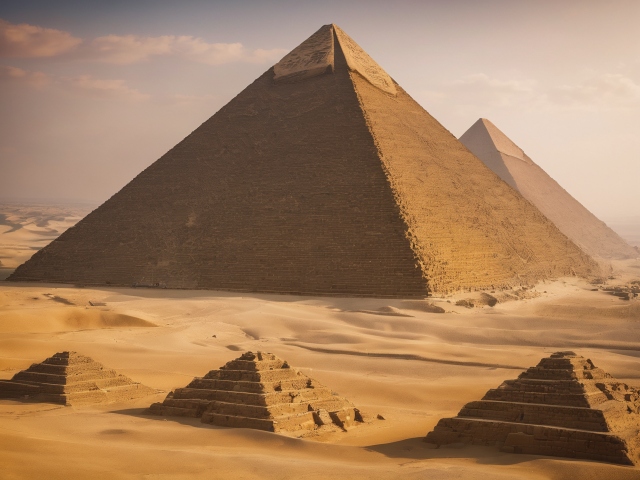
-
Egypt Wants To Restore A Giza Pyramid To Its Former Glory, But Archeologists Are Not Happy [Video]
05 Feb 2024 by Heinrich in History, Tech/Sci, Video, World
[imagesource:gencraft]
Archaeologists have their brushes in a twist over a recently announced plan to rebuild one of Egypt’s Giza pyramids, comparing it to an attempt at straightening the Leaning Tower of Pisa.
Mostafa Waziri, Secretary-General of Egypt’s Supreme Council of Antiquities, announced in a video that the Menkaure Pyramid Project began in January. The purpose would be to reconstruct the pyramid’s front, which used to include 16 layers of granite – most of which is now lying at its base. The project is expected to take around three years to complete.
Archaeologists and social media users are not excited about the news, however, calling the project “a sad disaster.” One of the notable critics of the attempt to rebuild a relic is Monica Hanna, a celebrated Egyptologist, who released a statement challenging the idea that the granite blocks at the base of the pyramid were indeed fragments that had fallen off.
Hanna claims that some of the blocks were “not polished, meaning they were likely left behind by the pyramid’s workmen”. Some of the blocks missing from the pyramid were once used by King Ramses II to make statues and over the centuries, the pyramid’s other granite blocks were used to make buildings and other ancient infrastructure.
The Egyptologist also complained about the ‘cinematic’ way that Waziry announced the project, referring to the video in which Waziry could be seen speaking about the project in front of the pyramids whilst workers were seen excavating sand and blocks in the background.
[image:wikicommons]
He should have published the completed project study in a peer-reviewed international archaeological journal ahead of construction work on the pyramids rather than filming the announcement with men digging in the background.
Hanna further lamented that the construction might jeopardise the Memphis necropolis, which includes the pyramid, on the World Heritage list. The attempt, according to her, “is tantamount to tampering with Egyptian antiquities and undermining its antiquity and history.”
Waziri stated in the ‘cinematic’ video that the project began as a collaboration between the Japanese government and Japanese Egyptologist Sakuji Yoshimura, whose attempt to build a pyramid in 1979 failed. The initial phase will be to investigate the stone blocks, followed by laser scanning and reinstalling the exterior shell.
Nour Badr, the head of the scientific team that documented the stones with a 3D laser also released his own ‘promo video’ in which he said that the team used Japanese technology to create a digital model of the pyramid and the fallen stone blocks of the pyramid.
“We are using and reassembling the actual blocks that fell to the ground from the pyramid itself,” Badr said. “It’s being said that we’re putting in new things. Do we use materials? We use international restoration materials that have standardized specifications approved by international committees for restoration and assembly work.”
It would be cool to see a pyramid restored to its former glory, even if it is just one side. On the other hand, there will likely be some archaeological evidence lost with work crews scurrying up and down the pyramid.
Perhaps a good compromise would be to allow the reconstruction, but only using ancient Egyptian tools and methods.
[source:artnet]
Latest News
-
Thai Woman Sentenced To Death For Murdering 14 Friends With Cyanide In Shocking Killing Spree
[imagesource: Sararat Rangsiwuthaporn] A woman in Thailand, dubbed 'Am Cyanide' by Thai...
-
René Magritte Painting Sells For Record R2.1 Billion At Auction
[imagesource:renemagritte.org] A René Magritte painting portraying an eerily lighted s...
-
Brave Rape Survivor Alison Botha Faces New Challenge After Brain Surgery
[imagesource: Alison Botha] Gqeberha rape survivor Alison Botha, a beacon of resilience...
-
Get Ready For The Mother of All Celebrations As MCQP Turns 30
[imagesource:mcqp/facebook] Clutch your pearls for South Africa’s favourite LGBTQIA+ ce...
-
The Iconic Good Hope Centre Is Set For Redevelopment
[imagesource:capetown.gov] The City of Cape Town’s Mayoral Committee has approved the...
-






























